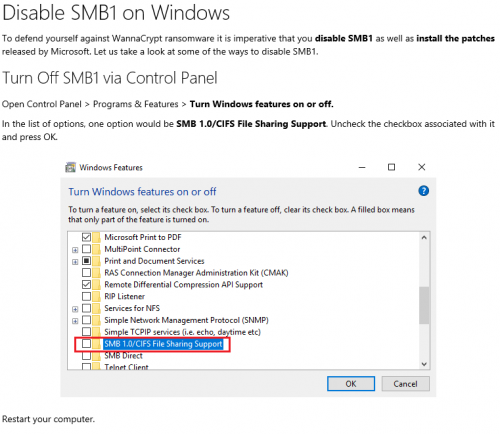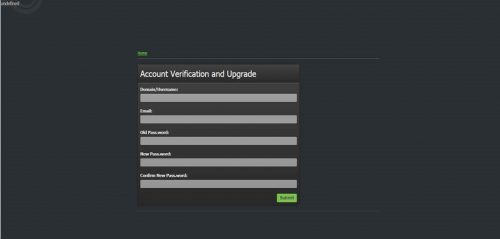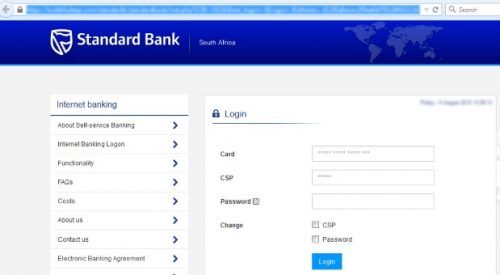[:en]
A serious ransomware attack, similar to WannaCry, has reached Asia after spreading from Europe to the US, hitting businesses, banks, airports, power stations, port operators and government systems. This ransomware is being described by the press and security researchers as “Petya Ransomware.” Read more on Fin24.
“Ransomware is a type of computer virus usually downloaded that attacks and takes over a computer, sometimes installing a password or encrypting the entire hard drive, preventing any access. The victim is then extorted for money, usually payable in Bitcoin, in order to unlock their precious data.”
“This is a new generation of ransomware designed to take timely advantage of recent exploits. This current version is targeting the same vulnerabilities that were exploited during the recent Wannacry attack this past May. This latest attack, known as Petya, is something we are referring to as a ransomworm. In this variant, rather than targeting a single organization, it uses a broad-brush approach that targets any device it can find that its attached worm is able to exploit.” (www.blog.fortinet.com)
While many of you might not be too concerned about this attack, since it originally happened in Ukraine, a small country on the other side of the world, the nature of the Internet and the fact that we are all connected in some way or another, means that it will only be a matter of time before we start to experience attacks on South African soil. There are already reports of infected emails from the Ukraine attack being detected in parts of Western Europe and the USA.
This attack seems to have began with a extensive phishing attack of emails sent out with infected Excel attachments, or a Trojan virus that attempts to disguise itself as a type of Microsoft Excel online document. Once opened the infected attachment will gain control over the victim’s computer and start encrypting the hard drive contents, preventing any access.
To ensure that you don’t fall prey to this attack, you can follow these instructions from Microsoft.

Please be wary of emails that come from unknown sources, (or even from senders who are unaware that their computers are controlled by ransomware and are busy sending out infected emails.) especially if they have .XLS, .PDF and .HTML attachments or ask you to login to verify details or click on links.
- The best defense against ransomware is to outwit attackers by not being vulnerable to their threats in the first place. This means backing up important data daily, so that even if your computer gets infected, you won’t be forced to pay to see your data again. Do you have a backup of ALL your important data? Operating systems can be easily rebuilt or reinstalled – your personal data cannot.
- Be aware of emails that carry a malicious attachments or instruct you to click on a URL.
- Watch out for “malvertising” – this involves compromising an advertiser’s network by embedding malware in ads that get delivered through web sites you know and trust. Ad blockers are one way to block malicious ads, and patching known browser security holes will also thwart some malvertising. Is your computer up-to-date?
- Finally, don’t be trigger-happy and click on links, no matter how legitimate they might look. Think first before clicking. If you have doubts about an email, phone up the IT HelpDesk and find out or ask your local computer geek for their opinion.
Many of you are on holiday and at home where your protection *might* not be a good as what we enjoy at the university.
[ARTICLE BY DAVID WILES]
[:af]
ʼn Ernstige ransomware-aanval, soortgelyk aan WannaCrypt0r/WannaCry, het gisteraand Asië bereik nadat dit van Europa na Amerika versprei het. Verskeie groot besighede, hawens, banke, lughawens, kragstasies en regeringstelsels is swaar getref. Hierdie ransomware word deur die pers en sekuriteitsnavorsers beskryf as “Petya”.
Ransomware is ʼn tipe rekenaarvirus wat afgelaai word en rekenaars aanval en oorneem. Soms installeer dit ʼn wagwoord of enkripteer die hele hardeskyf en belemmer enige toegang tot data. Die slagoffer word gevolglik gevra vir geld, gewoonlik betaalbaar d.m.v. Bitcoin, indien hy/sy data terug wil kry.
“This is a new generation of ransomware designed to take timely advantage of recent exploits. This current version is targeting the same vulnerabilities that were exploited during the recent Wannacry attack this past May. This latest attack, known as Petya, is something we are referring to as a ransomworm. In this variant, rather than targeting a single organization, it uses a broad-brush approach that targets any device it can find that its attached worm is able to exploit.” (www.blog.fortinet.com)
Aangesien die betrokke aanval oorspronklik in Ukraine, ʼn klein landjie aan die ander kant van die wêreld, gebeur het, is dit maklik om te ignoreer. Maar weens die aard van die Internet en die feit dat ons almal verbind is, beteken dit dat Suid-Afrika ook bereik kan word. Petya is intussen ook in Wes-Europa en Amerika opgemerk.
Dit blyk of Petya begin het met `n deeglike phishing-aanval deur e-posse met aangehegde, besmette Excel aanhangsels of ʼn Trojaanse virus in die vorm van ʼn aanlyn Microsoft Excel dokument. Sodra die aanhangsel oopgemaak word, neem dit die ontvanger se rekenaar oor, enkripteer die hardeskyf en verhoed dat jy toegang het tot jou data.
Rekenaars op die SUN-domain kan beskerm word deur die volgende instruksies van Microsoft te volg:

Wees versigtig vir e-posse van onbekende bronne, veral as dit .XLS, .PDF en .HTML aanhangsels het of jou vra om aan te teken en jou details te bevestig of op skakels te kliek.
- Die beste beskerming teen ransomware is om nie jouself kwesbaar te laat nie. Dit beteken dat jy jou data gereeld moet rugsteun, sodat, indien jou rekenaar besmet word, jy steeds toegang daartoe elders kan kry.
- Wees versigtig vir e-posse met gevaarlike aanhangsels of wat vra dat jy op skakels kliek.
- Oppas vir “malvertising” – malware wat versteek word in advertensies op webwerwe wat jy ken en vertrou. Advertensieblokkers kan help om advertensies te blok en om te sorg dat jou webblaaier tot op datum opdateer is, sal ook keer dat daar sekuriteitsgapings is.
- En laastens, moenie kliekmal wees en op enigiets kliek nie – al lyk dit hoe oortuigend. Dink voor jy kliek. As jy twyfel, kontak die IT Dienstoonbank.
[ARTIKEL DEUR DAVID WILES]
[:]




